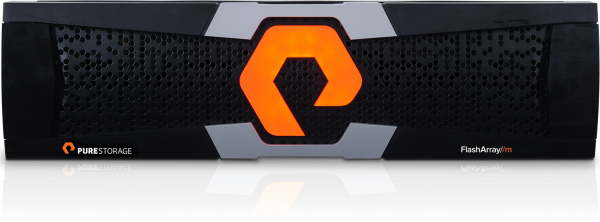
The falling cost of flash-based storage arrays in recent years has made the technology more accessible to enterprises than ever before.
According to research from IDC, the emergence of more robust offerings that can handle a wide range of increasingly complex workloads has helped drive the worldwide flash-based array market to US$11.3 billion in 2014.
Pure Storage is one of the storage startups among others that once dominated the enterprise flash storage market. That market has since become highly competitive, with traditional storage vendors such as HP and EMC joining the fray with their own offerings.
In this month’s Q&A, we interviewed Michael Cornwell, Pure Storage’s chief technology officer in Asia Pacific and Japan (APJ), on his company’s unique offerings and how they address customer needs.
Q: What problems were you trying to solve when Pure Storage was founded and when you first started in APJ?
A: Pure Storage was created so that we can help customers achieve business results. Storage was a major challenge in the data centre for a long time. The problem was that storage was running slower than everything else.

At Pure Storage, we are injecting flash technology innovation into traditional data centre, and helping our customers re-balance how they think about access to data. Flash technology allows our customers to run much faster with their data queries. This translates to all kinds of benefits, including getting real-time analytic insights and running batch processes (creating backups, running analysis, etc) in the data centre at any time of the day, and not just at night.
We want to bring the benefits of flash – speed, reliability, durability, energy efficiency – to our customers. When we first started in APJ in early 2013, we were embraced by customers looking for competitive differentiation through the innovation all flash could offer their businesses.
From cloud providers in Australia to large semiconductor manufacturers in Singapore and Korea to automakers in Japan, Pure Storage was able to deliver results to the bottom line of their businesses with less operational cost than existing data centre solutions.
Q: How do Pure Storage solutions differ from that of other flash storage vendors?
A: Pure Storage’s disruptive, software-driven storage technology combined with a customer-friendly business model drives business and IT transformation for customers through dramatic increases in performance and efficiency at lower costs. Pure Storage FlashArray is simpler, faster and more elegant than any other technology in the data centre. It is ideal for the move toward big data and for performance-intensive workloads such as cloud computing, database systems, desktop virtualisation, real-time analytics and server virtualisation.
Q: The performance benefits of all-flash arrays are well understood, but enterprises are also expect data protection and storage federation to come with their storage solutions. How does Pure Storage address those needs?
A: Mainstream adoption of flash is really predicated on providing customers not just the performance of flash but the breakthroughs in data protection flash offers. Pure Storage reinvented the storage array from the ground up to optimise RAID layouts, snapshotting and high availability for flash that gives customers a better user experience and avoid frustrations of legacy storage systems.
Q: Instead of the usual 6:1 ratio of effective capacity to raw capacity that most vendors have adopted, Pure Storage’s calculations appear to assume a lower ratio, closer to 3.5:1, thus delivering less-than-anticipated space savings for workloads other than VDI. How do your customers with non-VDI workloads come to terms with this?
A: There aren’t industry standards on what exactly is delivered in data reduction marketing claims. This has led to a lot of confusion with customers on what exactly is being reduced. Pure Storage took a different approach by listing on our web site exactly what we consider is reduced data, typical returns in data reduction for given applications and even listing the real time data reduction rate of arrays in actual customers. Whether database, server virtualisation or VDI, this honest approach has resonated with customers.
Q: Pure Storage often talks about always-on deduplication as a benefit. However, others feel that the “always on” capability at 512B granularity is inefficient due to excess metadata storage, thus reducing data reduction benefits in database applications. What are your thoughts on this?
A: The “serverisation” of storage by using off the shelf Intel CPUs and high performance DRAM has led to high performance all flash arrays that are capable of handling the demands of always on deduplication and compression. Pure Storage developed a metadata fabric that is scalable, adaptive and versioned to avoid destructive upgrades when scaling capacity of the array. It uses a capacity optimised storage layout and variable sized segments to allow Pure Storage to avoid the constraints experienced by others with fixed size metadata that can only be stored in DRAM.






